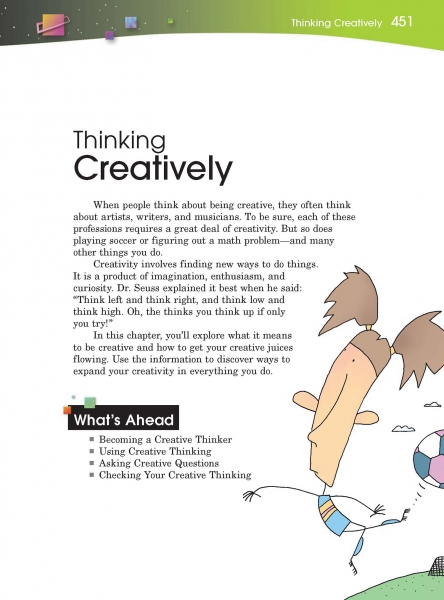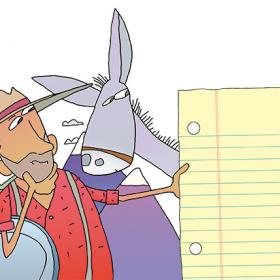Page 451 from

Start-Up Activity
Display the “Think About It” quotation. Ask students to brainstorm ways that a conflict of ideas produces creativity. What are some examples that demonstrate Versace's point?
Point out that Versace, a fashion designer, reveals this idea in her clothing designs, which use colors and shapes that seem out of place on their own but when combined produce unexpected beauty. Tell students that this chapter provides strategies for sparking creativity through a conflict of ideas.
Think About It
“Creativity comes from a conflict of ideas.”
—Donatella Versace

Start-Up Activity
Display the “Think About It” quotation. Ask students to brainstorm ways that a conflict of ideas produces creativity. What are some examples that demonstrate Versace's point?
Point out that Versace, a fashion designer, reveals this idea in her clothing designs, which use colors and shapes that seem out of place on their own but when combined produce unexpected beauty. Tell students that this chapter provides strategies for sparking creativity through a conflict of ideas.
Think About It
“Creativity comes from a conflict of ideas.”
—Donatella Versace






